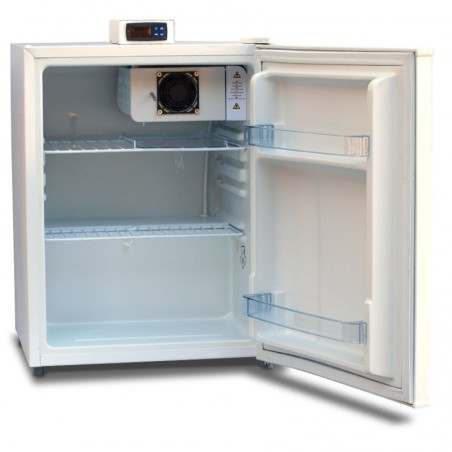Seminal doses used for cervical and post-cervical artificial insemination (CAI and PCAI, respectively) vary in volume, the number of spermatozoa and packaging. The aim was to evaluate the outcomes when there was use of routine processing procedures for CAI- and PCAI-doses. Two different types of seminal doses were processed: 1) CAI: 2.7 × 109 sperm/80 ml; 2) PCAI: 1.5 × 109 sperm/45 ml. In Experiment 1, the cooling curve of seminal doses during processing occurred in two phases: 1st) At room temperature (23.4 ± 0.5 °C) from 0 (just after packaging) to 120 min; 2nd) At refrigeration (15.7 ± 0.8 °C) from 121−240 min.
For the PCAI-doses, the time required to reach room temperature was 47 min compared to 107 min for CAI-doses (decreasing velocity of 0.093 °C/min and 0.048 °C/min, respectively). During refrigeration, for the PCAI-doses the time required to reach the desired preservation temperature was 20 min less than for CAI-doses (PCAI: 90 min, 0.074 °C/min; CAI: 110 min, 0.066 °C/min). In Experiment 2, sperm motility, kinetic parameters and acrosome damage for both types of doses were evaluated at 0, 24, 48 and 72 h of refrigeration. Also, morphology, pH, and osmolality were assessed at 0 and 72 h. Values for all these did not differ between CAI- and PCAI-doses.

In conclusion, PCAI-doses took less time than CAI-doses to reach the desired temperature, but sperm quality was similar for CAI- and PCAI-doses during storage. Nevertheless, the different cooling curves should be taken into consideration for further investigation.
Luongo C., Garrappa G., Llamas-López P.J., Rodríguez-Tobón E., López-Úbeda R., Abril-Sánchez S., García-Vázquez F.A., Effect of boar seminal dose type (cervical compared with post-cervical insemination) on cooling curve, sperm quality and storage time, Animal Reproduction Science, 212 (2020).https://doi.org/10.1016/j.anireprosci.2019.106236




